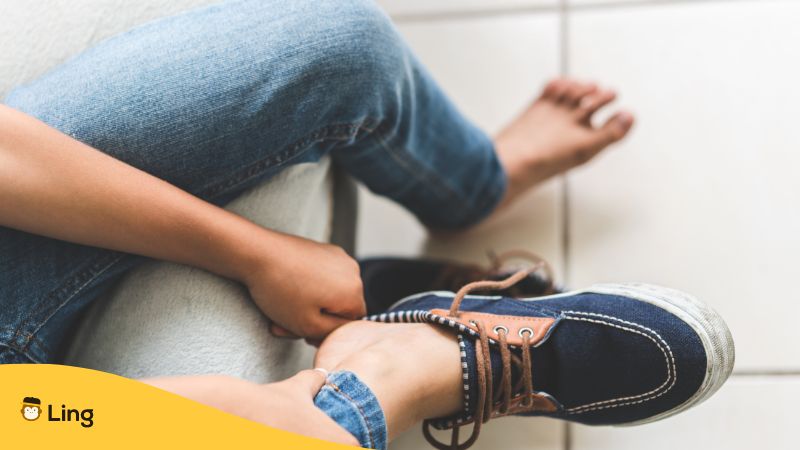Did you know that Nepali manners and etiquette vary depending on the 125 ethnic groups and castes that comprise Nepal’s diverse population? The coolest thing about it is that each group has its unique customs and traditions, making every encounter a fascinating cultural experience! Let’s get to know more about this in this epic guide!
Nepal is known for its warm and welcoming culture, and visitors are often greeted with kindness and hospitality. However, as a guest in their country, it’s essential to show respect for Nepali culture and traditions. You never want to sound like a rude foreigner during your tour of the country, right? If that’s the case, then mastering at least the common manners and etiquette will undoubtedly be a great investment.
By understanding the basics of Nepali manners and etiquette, you can show appreciation for their culture and ensure you don’t unintentionally offend anyone. In this article, we’ll explore some essential customs and etiquette practices to remember during your visit to Nepal. So, if you want to make the most of your trip and avoid cultural misunderstandings, read on to discover some essential tips for navigating Nepali customs with respect and ease.
Guide To Nepali Manners And Etiquette
Before delving into the Nepali manners and etiquette list, it’s essential to understand the country’s cultural background. Nepal is a unique blend of religions like Hinduism and Buddhism, which has led to a diverse and vibrant culture. Religion and spirituality play an essential role in daily life, and visitors should be mindful of these customs.
Additionally, Nepali society strongly emphasizes family values and respect for elders, which are reflected in their customs and traditions. For example, touching someone’s feet as a sign of care is common, particularly among older generations. By learning about these cultural practices, you can gain a deeper appreciation for Nepal and its people and show respect for their way of life.
In the following sections, we’ll explore some essential customs and etiquette practices to remember during your visit to Nepal.

1. Always Use Your Right-Hand
It would be best if you always used your right hand when passing and receiving things and wiping your mouth. If you wish to use your left hand, it should only be when cleaning yourself. You may ask, why can’t you use your other hand, and what’s the big deal? Interestingly, the left hand is considered dirty. There’s no particular explanation for this, but many Nepalis widely understand that using this part of the body to pass or eat something is considered rude.

2. Use Serving Spoons
Would you like someone to pass their food to you after they’ve used them already? We bet you’re giving us an immediate “no.” So, in this basic etiquette, you’re expected not to use your utensils to pass food. There’s proper paraphernalia for these things; it’s best to keep your hygiene intact.
3. Finish Your Food
Despite feeling full, always finish your meal. Locals generally understand that not consuming all your food means that the dish wasn’t satisfying.

4. Don’t Offer Beef To A Nepali
Cows are sacred creatures to Nepalese people. So, they don’t consume beef; they usually consume alternatives like chicken, lamb, and buffalo. However, it’s alright to eat beef in front of them; don’t ask them if they want some since it’s disrespectful.
5. Avoid Stepping Over Religious Items
If you see any image of a god or items that they respect, don’t step over it. You must also let a person move past you first if they carry a religious item to show respect for their culture.

6. Shaking Hands
It’s common to shake hands with people of the same gender. However, never greet women this way if you’re a man. You may only shake hands with them if they initiate the action. So, how do you greet them? You may join your hands and say “namaste” to address their presence.
7. Entering Hindu Temples and Buddhist Temples
Suppose you took a trip to discover more about the Nepali religion; you might get disheartened after knowing that non-Hindus aren’t allowed to enter certain temples or areas like the inner sanctum. But if you’re given a chance to go in, you have to consider the following:
- Don’t wear anything that’s made of leather.
- Don’t enter the temple if you’re menstruating. There are sacred places that allow this.
- Each temple has two doors: one for lower castes and another for ordinary Hindus.
- Take off your shoes and headwear when setting foot on the premise.
- Don’t wear short pants and skirts. It’s ideal for women to wear clothes that cover their arms and legs. While if men are wearing shorts, they’re given a robe or sarong before entering.
- If you’re taking a tour of these temples and Buddhist stupas, you must walk clockwise.
- When visiting temples, it’s common to receive items like coconuts and bananas. As a sign of respect, you must accept them, but if you have allergies, you may offer them to someone else.
- Donate a few rupees to someone who offers you a thread bracelet.

8. Remove Your Shoes Before Entering Someone’s Place
Although Nepalese people aren’t huge fans of inviting non-family members into their households, you must take note to remove your shoes when entering their homes. It’s also nice to bring fruit as a small gift.
9. Don’t Point The Soles of Your Feet To Someone.
If you and your siblings are used to pointing your soles at each other, then it’s best not to carry this habit in Nepal. The feet are impure as it’s on the lowest part of the body. So, if you want to ask someone to move or point out something, just ask them with respect and use your hand.
10. Touch Your Forehead
Even in the busiest of moments, it’s important to be mindful of cultural customs and practices. In Nepal, the way in which you apologize for accidentally bumping into someone is unique and reflects the country’s traditions. Instead of simply saying sorry, the custom is to place your hand on the person’s shoulder or touch your foot, followed by touching your forehead and bowing slightly as a sign of respect.
11. Sitting On Someone’s Lap
Do you sit on your friend’s lap? Some people would say yes, while others may already have a violet reaction to this. In Nepal, it’s normal for the same gender to sit on each other’s lap. It doesn’t really require both parties to have a romantic relationship, it can be platonic or familial. However, remember that this doesn’t apply to the opposite sex.

12. No Public Displays of Affection
Many people, especially couples, are probably used to showing their affection for each other in public. But if you’re staying in Nepal for a while, you might want to keep your distance from each other for at least a meter. Interestingly, Nepalese men tend to maintain their distance from opposite sexes to show their respect to women. This even applies to married couples, but in other ethnic groups, they’re open to seeing contact between men and women.
13. Don’t Give Money To Street Children
While helping others, especially children, is often considered a kind gesture in many cultures, in Nepal, the act of giving money to street children can be seen as inappropriate. This is because there is a risk that the money may be used to fuel unhealthy habits, such as drug use. Instead, there are other ways to show kindness and support, such as donating to a reputable organization that works with disadvantaged children or offering food and other basic necessities.
14. Family Terms
In Nepal, they use the following terms below to address their family members or close friends.
Want To Learn More About Nepali Culture? Join Ling Now!

After learning about these basic Nepali manners and etiquette, do you think you’re now prepared for your flight to Nepal? Well, if you’re still on a rocky patch, you may want to learn more about this language! Our advice? Try Ling now to find out more about their culture, traditions, language, and more facts!
Ling is a language-learning platform that doesn’t offer typical boring lessons. With this app, you can have fun as you learn 60+ different languages all over the world! So, what are you waiting for? Download Ling now on Play Store or App Store for FREE!



































































